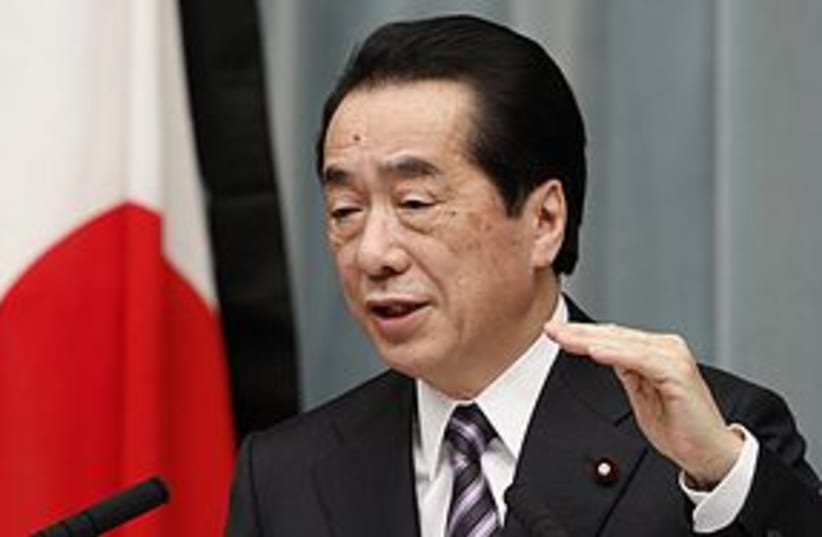EMERGENCY NUCLEAR WORKERS RECRUITEDNuclear workers have been offered up to 400,000 yen ($5,000) per day to work in risky high-radiation conditions inside reactors at the Fukushima plant, according to Japanese media.TEPCO says it was considering using "jumpers", or workers who rush into highly radioactive reactors for quick jobs, such as installing water pumps, then "jump" out to avoid prolonged exposure to radiation. The practice was common in the United States in the 1970s and early 80s.France is a global leader in the nuclear industry and Paris has flown in experts from state-owned nuclear reactor maker Areva to work with Japanese engineers.Areva has also shipped 11,000 hazmat suits and thousands of protective breathing masks to be used in and around the nuclear plants.The United States and Germany are sending robots to work in the highly radioactive parts of the reactors. Kyodo said around 140 US military radiation safety experts would arrive.US nuclear workers were also being recruited to join the recovery teams at Fukushima and will begin flying in on Sunday."These are not 'jumpers' rushing into a room. TEPCO is bringing in robots to help limit human exposure to high levels of radiation," said Joe Melanson, a recruiter at specialist nuclear industry staffing firm Bartlett Nuclear in Plymouth, Massachusetts.Japan's NISA has warned TEPCO to ensure the health of workers after it was reported the company did not have enough radiation dosemeters.The Japanese disaster has revived the debate over the safety and benefits of atomic power. In Switzerland a parcel bomb exploded at the office of the national nuclear lobby, injuring two employees. It was not known who sent it.France -- the most nuclear-dependent country in the world -- has called for new global nuclear rules and proposed a global conference in France.Illustrating the terrible, surreal times through which Japan is living, one newborn baby's first medical appointment was not with a pediatrician but a Geiger counter."I am so scared about radiation," Misato Nagashima said as she took her baby Rio, born four days after the earthquake and disaster, for a screening at a city in Fukushima prefecture.Food and milk shipments from the region have been stopped, devastating the livelihoods of farmers and fishermen. Various countries have banned food imports from the area.But life in Tokyo, Japan's capital of 13 million people, was slowly returning to normal after the early days of the disaster when train services were patchy, workers stayed home and groceries like bread, milk, toilet paper and diapers were rare.Yet Tokyo residents still worry about the spread of radiation and another big quake."I only go as far from home as I can walk back and I take emergency gear with me," said Noriko Ariura, rummaging in a bag holding a radio, flashlight, bottled water and medicine.
Japan PM vows funding to tackle long nuclear crisis
Naoto Kan says he is prepared to "win this battle;" no end in sight to nuclear, humanitarian disasters; radiation levels still high.

EMERGENCY NUCLEAR WORKERS RECRUITEDNuclear workers have been offered up to 400,000 yen ($5,000) per day to work in risky high-radiation conditions inside reactors at the Fukushima plant, according to Japanese media.TEPCO says it was considering using "jumpers", or workers who rush into highly radioactive reactors for quick jobs, such as installing water pumps, then "jump" out to avoid prolonged exposure to radiation. The practice was common in the United States in the 1970s and early 80s.France is a global leader in the nuclear industry and Paris has flown in experts from state-owned nuclear reactor maker Areva to work with Japanese engineers.Areva has also shipped 11,000 hazmat suits and thousands of protective breathing masks to be used in and around the nuclear plants.The United States and Germany are sending robots to work in the highly radioactive parts of the reactors. Kyodo said around 140 US military radiation safety experts would arrive.US nuclear workers were also being recruited to join the recovery teams at Fukushima and will begin flying in on Sunday."These are not 'jumpers' rushing into a room. TEPCO is bringing in robots to help limit human exposure to high levels of radiation," said Joe Melanson, a recruiter at specialist nuclear industry staffing firm Bartlett Nuclear in Plymouth, Massachusetts.Japan's NISA has warned TEPCO to ensure the health of workers after it was reported the company did not have enough radiation dosemeters.The Japanese disaster has revived the debate over the safety and benefits of atomic power. In Switzerland a parcel bomb exploded at the office of the national nuclear lobby, injuring two employees. It was not known who sent it.France -- the most nuclear-dependent country in the world -- has called for new global nuclear rules and proposed a global conference in France.Illustrating the terrible, surreal times through which Japan is living, one newborn baby's first medical appointment was not with a pediatrician but a Geiger counter."I am so scared about radiation," Misato Nagashima said as she took her baby Rio, born four days after the earthquake and disaster, for a screening at a city in Fukushima prefecture.Food and milk shipments from the region have been stopped, devastating the livelihoods of farmers and fishermen. Various countries have banned food imports from the area.But life in Tokyo, Japan's capital of 13 million people, was slowly returning to normal after the early days of the disaster when train services were patchy, workers stayed home and groceries like bread, milk, toilet paper and diapers were rare.Yet Tokyo residents still worry about the spread of radiation and another big quake."I only go as far from home as I can walk back and I take emergency gear with me," said Noriko Ariura, rummaging in a bag holding a radio, flashlight, bottled water and medicine.